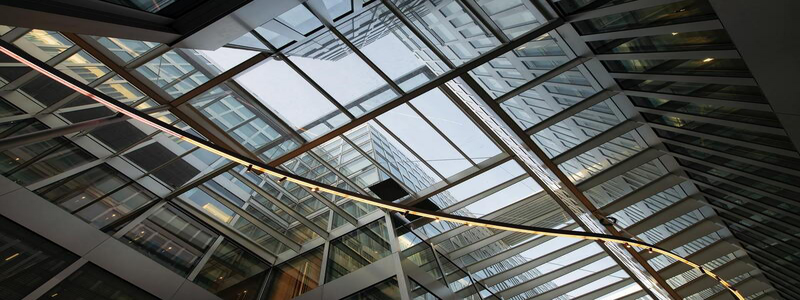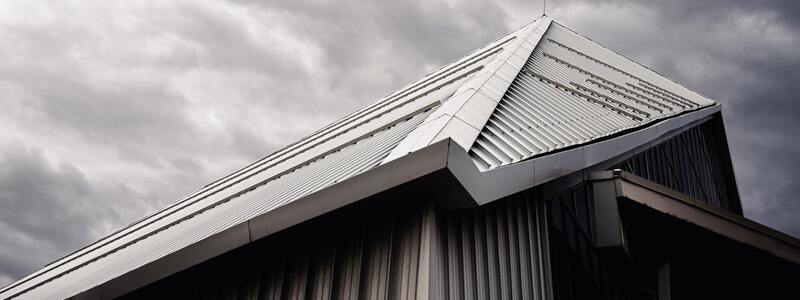
Commercial Roof Types
A roof may seem like just a roof, but in essence, a roof is so much more. It not only protects you from the weather but also enhances the look of your home. You can include roofing as part of your decor to achieve a look that really stands out, especially now that you can get different colored roofs.
Roofs can be classified as either residential or commercial. They of course do the same thing, but a commercial roof is much larger than a residential roof and it is primarily used for commercial purposes. It can either have a lower slope, or it can be entirely flat.
Which Are The Most Common Types of Commercial Roofs?
The typical commercial roof types designs will require you to consider factors such as the weight of equipment that’s housed on the roof and the need to cover a much larger area. Residential roofs do not have much design worry and they are typically easy to maintain, replace and repair.
Durability, Cost, and Energy Efficiency of Commercial Roofs
This is actually the trifecta of having a commercial roof. It should be durable, cost-efficient as well as energy-efficient.
When properly installed, a commercial roof has a lifespan of over 50 years, although this depends on sub-roof and climate conditions, which could either increase or decrease the estimates.
For years now, people have been extremely concerned about the efficiency of commercial roofs, and they have been adding more and more parameters to make them energy efficient. For a business owner, energy efficiency is of utmost importance as this means that the roof would save them some money in the long run.

The cost of installing a new commercial roof will certainly be at the back of your mind. They can be expensive, but of course, this will depend on the type of roof you choose. Some of them will be extremely costly to install, but easier to maintain, while others are likely to be cheaper to install but more expensive to maintain.
Here’s a look at the different commercial roof types:
Metal Roofs
Metal roofs are a popular option for commercial roofs and this is usually due to their high lifespan of between 40 and 60 years. There are many different types of metallic roofing systems available and some will even come with an integrated solar or snow system that’s removable.
The most common types of metal roofing materials are:
- Aluminum, tin, and zinc
- Copper
- Corrugated galvanized steel
- Coated or stainless steel
- Tile sheets
Metal roofs usually have an attractive and finished look with a strong fire-resistance rating. They are also more sustainable and stronger than other roofing options.
The only downside to metal roofs is that they are susceptible to corrosion, and because of this, they should have a protective surface layer added in order to manage the damage from moisture, exposure, and other environmental factors.

Built-up Roofing Membrane
A built-up roofing membrane has a life span of more than 20 years and it’s made of alternative gravel and tar layers. The total number of layers affects its cost and durability. The roof is inexpensive and very easy to manage and it is actually one of the most flexible and oldest roofs available.
It holds up well with foot traffic, but it all depends on the stability of the understructure that has been installed to carry movement and vibrations. It is also UV resistant and can be coated in order to reflect the heat.
The main downside to the built-up roofing membrane is that it has the shortest lifespan compared to other types of roofs and it is also difficult to identify a leak if there’s ever one on it.
Green Roof
Nowadays, green roofs have become extremely popular as they can last a long time, between 30 and 50 years. They mostly consist of a tough waterproof membrane that’s normally covered by green plants.
These are sustainable masterpieces that help improve the air quality and can often add a green relaxation space for people to enjoy.
The main advantage of a green roof is that it is environmentally friendly and can really improve the aesthetics of the building. It often comes with sophisticated drainage and water management system, with sensor capabilities.
The main downside is that it requires regular, ongoing monitoring and maintenance of the plants.
Thermoset EPDM Membrane Roof
EPDM stands for Ethylene Propylene Diene Terpolymer, which refers to a roll-based and durable synthetic rubber roof membrane that’s also known as Thermostat roofing. The EPDM offers strong resistance to pollution and sunlight, and it is versatile, easy to install, and long-lasting.
EPDM roofs come in either black or white rolls and in addition to their resistance to the sun and pollution they are also able to withstand most solvents such as acids and alcohol.
The downside to EPDM however is that they are not the prettiest of roofs and they can easily puncture – this is when debris falls on the roof or when people walk on them.

TPO and Thermoplastic PVC Roof Membranes
TPO or Thermoplastic Polyolefin and PVC or Poly Vinyl Chloride roofs are materials used in roofing that are extremely resistant to adverse conditions. These conditions include chemicals such as oils and fats, UV lights, and bacterial growth.
These can easily damage the roof membranes. They are also heat-reflective, lightweight and puncture resistant.
Other benefits of PVC and TPO roofs are that they have strong air-welded seams, tolerant to high winds and high temperatures and they are also fire-resistant.
The main downside is that; due to their immense popularity, there are several fake TPO products on sale that are made of poor and cheap materials. Many smaller manufacturers are trying to create their own product lines that make it easy for consumers to get dupped.
What Is The Difference Between TPO and EPDM?
The main difference between TPO and EPDM is that TPO reflects the sun and allows the commercial air conditioners to work efficiently, while EPDM comes with a dark surface that absorbs heat in summer conditions and forces the cooling system to work harder.
Shingles
This is a common material used with residential roofs. Shingles can however still be used in commercial roof types but only those that have steep roofing lines.
There are many different types of shingles used in roofing, such as architectural, asphalt, plastic, ceramic, and slate. They are affordable, easy to install, and extremely versatile.
The downside to shingles is that depending on the type you use, the lifespan usually isn’t that long compared to other roof types and shingles tend to be more susceptible to moss and mildew if you happen to have your building near a shaded area.
The B&M Roofing Company
At the B&M roofing company, we offer solutions for both commercials as well as residential roofing in Colorado. We have many years of experience in this field and our customers trust us explicitly.
We offer specialty products that can help with your home or business across the state and all nearby areas. You can take advantage of our RoofSave option today, which offers a comprehensive management program with a cost-effective approach to roofing in Colorado.




































